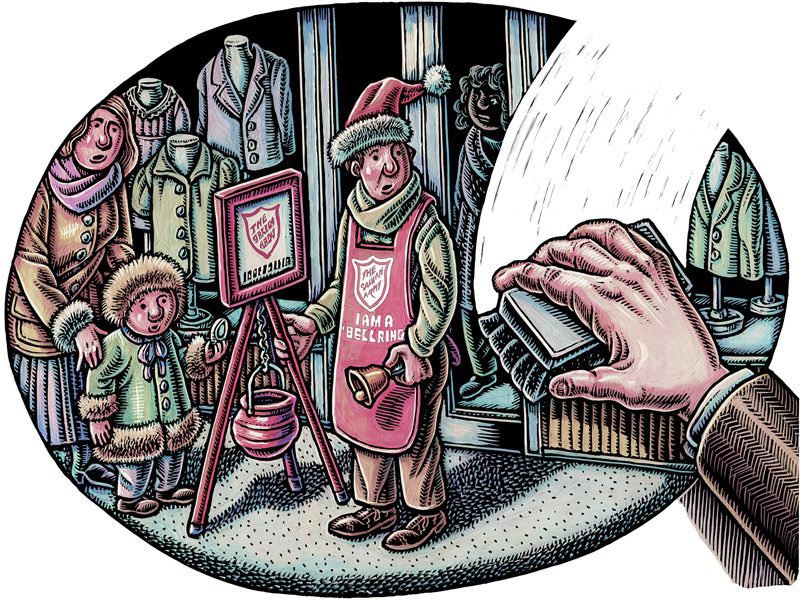Bridging Division
by Robert Docter –
In groups––take a church for instance––divisiveness occurs when a unified congregation somehow splits. How does that happen? It usually starts with one discontented and divisive person. Quietly the contagion of discontent spreads. Soon, people begin arguing over trivial issues and blowing them into massive problems.
I’ve heard “negativity” about such things as the kind of music that should be used in a service, about who should play the piano, about the kind of clothes that must be worn in church, about whether or not the officer is a good enough preacher, about the kind of biblical translation that should be used, and even about the quality of someone’s prayer.
Ugh! (Be on guard whenever you hear the word should.)
People need allies in the causes they create. They seek to win over others to their point of view. Gossip ensues. Enlistments build, people begin taking “sides.” Before you know it, the congregation is divided. People are labeled. Communication breaks down. Divisiveness spreads its ugly fumes as groups form, and an “us” vs. “them” mentality grows like a cancer.
What to do?
Here’s an idea generated at a place where egos are massive, where shoulds are carved in stone, and where the score is kept and reported daily.
The U.S. Senate was stuck!
They were immobilized. They couldn’t move. Divisiveness had infected their culture. Vital legislation was stalled. Appointments to various positions were put on hold. There was fear among the minority that an anarchy of the majority would simply run roughshod over them.
One political party, (call them the “reds”), barely the majority, wanted to appoint someone to something. The other party (call them the “blues”), not quite the majority, didn’t want that to happen. So, the “blues” threatened to “filibuster”––a unique Senate tradition that stops action on everything by using the privilege of unlimited time for the person who holds the floor. It requires 60 Senate votes to end a filibuster.
Nobody wanted a filibuster. It wastes time, stops action on everything, is physically taxing, and rarely productive.
The Senate needed a way out.
Fortunately, someone among them understood group process. This senator knew what was needed to manage the problem––to get it identified, defined, examined and organized in such way that a plan might be negotiated.
His work was masterful.
He decided to organize a third group––call them “the greens.” So, he invited some senators––eight or ten––to his office. His invitation went to carefully selected senators whose history in the Senate caused them to see the big picture––to see beyond the immediate moment into a wider range of particular consequences. All of them had strong personal beliefs. None of them were political ideologues. About half of them were “reds” and half were “blues.” He picked senators who had longevity, who were respected by their peers, and mindful of the Senate’s traditions and “culture.”
They had awareness of the Senate’s value system, its basic beliefs, its importance to the nation and to its place in history. Each appreciated the traditions of polite servility that guided its operation. None wanted to engage in political games.
They were only ten. The Senate seated 100. As the “greens” assembled, however, each became very aware that they were the middle ten, the rational ten, the moderate ten. If the “greens” could agree on a course of action that was rational, reasonable and realistic, the implication would be clear to both the “reds” and “blues” that a new block in the middle could sway a decision in whatever direction the middle chose.
What was needed, therefore, was the development of some kind of a compromise position that resulted in neither a “win” nor a “loss” for either the “reds” or the “blues.” They agreed to work together until they could find consensus. They avoided voting and sub-grouping. They never took sides. What they wanted to model for their colleagues was behavior appropriate to the situation––sometimes heated, sometimes cool––but always open to the ideas of others, always respectful of the rights of others. They knew that appropriate behavior can best be achieved through identifying options and selecting among them.
They announced their final compromise plan to the public and presented it to the Senate as an alternative to the positions announced by both the “reds” and the “blues.” It became obvious to all Senators that neither side would be completely victorious, but that both sides could see gains, and that the measure was clearly the best course of action available.
The compromise measure passed quietly and easily.
If it can happen there, it might even work in your church.










